By: Ron Sims, MA, Special Collections Librarian
Published: August 5, 2010. For updated information about the Department of Dermatology, please visit their homepage.
The term “skin diseases” first appears in the medical school’s annual catalog of courses in 1874. The Davis Free Dispensary, which was located in Mercy Hospital, provided an admirable complement to the hospital’s clinical instruction for medical students. A large number of patients were available as part of simulated private practice. Nearly 9,000 patients were treated the previous year in the special clinics. Each clinic consisted of six or eight medical students observing faculty physicians during examinations, treatments and operations.

 Many distinguished physicians have been at the forefront of dermatology practice and research at Northwestern University. James Nevins Hyde, MD (1840-1910), an 1869 graduate of Pennsylvania, relocated to Chicago, first as a lecturer in dermatology at Rush Medical College in 1873; then as clinical instructor for the renamed clinic, South Side Dispensary at the Medical Department of Northwestern University, known as the Chicago Medical College in 1875. This was followed by promotion to Professor of Dermatology in 1876. Dr. Hyde was then elected professor of skin, venereal and genito-urinary diseases at Rush Medical College in 1879, holding that chair for thirty-one years.
Many distinguished physicians have been at the forefront of dermatology practice and research at Northwestern University. James Nevins Hyde, MD (1840-1910), an 1869 graduate of Pennsylvania, relocated to Chicago, first as a lecturer in dermatology at Rush Medical College in 1873; then as clinical instructor for the renamed clinic, South Side Dispensary at the Medical Department of Northwestern University, known as the Chicago Medical College in 1875. This was followed by promotion to Professor of Dermatology in 1876. Dr. Hyde was then elected professor of skin, venereal and genito-urinary diseases at Rush Medical College in 1879, holding that chair for thirty-one years.
A. G. Paine, MD, served on the staff of the South Side Dispensary from 1878-1882, then was appointed lecturer on dermatology at Northwestern through the academic session of 1886-1887. His tenure was followed by that of R.W. Bishop, MD, professor of physiology and dermatology during the academic year of 1887-1888, while Dr. Paine returned to the South Side Dispensary as instructor in diseases of the skin and then at the medical school as instructor through the 1889-1890 session.
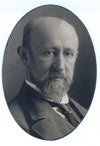 Joseph Zeisler, MD (1858-1919) was appointed professor of dermatology and syphilis in 1890. An 1882 graduate of the University of Vienna, he was an intern at the Vienna General Hospital where he came under the influence of Dr. Moritz Kaposi whose teachings played an important role in Dr. Zeisler’s choice of specialty. His wide-ranging experience, keen mind and forceful manner made him a great teacher and gave him a prominent place in American dermatology. During his tenure at Northwestern, he was also chief dermatologist at Mercy, Wesley Memorial and Michael Reese Hospitals and the South Side Dispensary. He remained as chairman until 1917 and retired as professor emeritus. He died on August 31, 1919.
Joseph Zeisler, MD (1858-1919) was appointed professor of dermatology and syphilis in 1890. An 1882 graduate of the University of Vienna, he was an intern at the Vienna General Hospital where he came under the influence of Dr. Moritz Kaposi whose teachings played an important role in Dr. Zeisler’s choice of specialty. His wide-ranging experience, keen mind and forceful manner made him a great teacher and gave him a prominent place in American dermatology. During his tenure at Northwestern, he was also chief dermatologist at Mercy, Wesley Memorial and Michael Reese Hospitals and the South Side Dispensary. He remained as chairman until 1917 and retired as professor emeritus. He died on August 31, 1919.
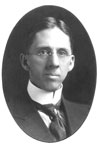 Dr. Zeisler’s successor was Frederick Gillette Harris, MD (1874-1919). A native Chicagoan, he completed his medical training at the University of Illinois in 1899. On completing his internship at Cook County Hospital in December 1901, he was appointed resident pathologist at the hospital, a position he held until June 1903. His experience and continued interest in pathology shaped him into an expert “dead house” pathologist, having extensive first-hand knowledge of pathologic anatomy. After studying internal medicine in Europe, he returned to Chicago in the fall of 1904 to take up two academic appointments at the University of Illinois in internal medicine. Following a brief study period in Europe, he returned to the University of Illinois and his academic career peaked in 1917 when he became professor of dermatology and syphilology at Northwestern University. His thorough foundation in pathology and internal medicine gave him a comprehensive view of dermatological problems. He wrote many articles and was among the pioneers in the United States. Dr. Harris’s enthusiasm for the discipline, his wonderful memory and keen power of observation made him an outstanding teacher. He died in July 1919 of pneumococcus meningitis, leaving a great gap in American dermatology and Northwestern, in particular.
Dr. Zeisler’s successor was Frederick Gillette Harris, MD (1874-1919). A native Chicagoan, he completed his medical training at the University of Illinois in 1899. On completing his internship at Cook County Hospital in December 1901, he was appointed resident pathologist at the hospital, a position he held until June 1903. His experience and continued interest in pathology shaped him into an expert “dead house” pathologist, having extensive first-hand knowledge of pathologic anatomy. After studying internal medicine in Europe, he returned to Chicago in the fall of 1904 to take up two academic appointments at the University of Illinois in internal medicine. Following a brief study period in Europe, he returned to the University of Illinois and his academic career peaked in 1917 when he became professor of dermatology and syphilology at Northwestern University. His thorough foundation in pathology and internal medicine gave him a comprehensive view of dermatological problems. He wrote many articles and was among the pioneers in the United States. Dr. Harris’s enthusiasm for the discipline, his wonderful memory and keen power of observation made him an outstanding teacher. He died in July 1919 of pneumococcus meningitis, leaving a great gap in American dermatology and Northwestern, in particular.
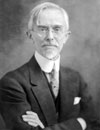 Arthur William Stillians, MD (1871-1967) was appointed professor of dermatology at the beginning of the academic session of 1920-1921. Dr. Stillians, a third generation physician, was an 1899 graduate of the University of Illinois; his father, Clark, was an 1869 graduate of the Chicago Medical College and his grandfather, John, received his medical education as an apprentice. Arthur’s preceptor at Illinois was Dr. William E. Quine, a classmate of his father’s 30 years earlier. He had an excellent record which helped him to obtain an internship at Cook County Hospital, 1899-1901. Arthur then took over his father’s private practice. Dermatology entered the picture when William Allen Pusey invited him to join his practice as an assistant. During this time he held two academic positions at his alma mater. In addition to his practice of dermatology with Dr. Pusey, he received an academic appointment at Illinois. This position gave Dr. Stillians an opportunity for postgraduate training. He spent four months in Vienna in 1910, with a brief stay in Paris. Although too late to study under Ferdinand von Hebra, he absorbed the transition of both Hebra’s “scratch department” and his research work. In 1959 he wrote a paper on Hebra: Ferdinand von Hebra. Q Bull Northwest Univ Med Sch. 33(2):141-5, 1959.
Arthur William Stillians, MD (1871-1967) was appointed professor of dermatology at the beginning of the academic session of 1920-1921. Dr. Stillians, a third generation physician, was an 1899 graduate of the University of Illinois; his father, Clark, was an 1869 graduate of the Chicago Medical College and his grandfather, John, received his medical education as an apprentice. Arthur’s preceptor at Illinois was Dr. William E. Quine, a classmate of his father’s 30 years earlier. He had an excellent record which helped him to obtain an internship at Cook County Hospital, 1899-1901. Arthur then took over his father’s private practice. Dermatology entered the picture when William Allen Pusey invited him to join his practice as an assistant. During this time he held two academic positions at his alma mater. In addition to his practice of dermatology with Dr. Pusey, he received an academic appointment at Illinois. This position gave Dr. Stillians an opportunity for postgraduate training. He spent four months in Vienna in 1910, with a brief stay in Paris. Although too late to study under Ferdinand von Hebra, he absorbed the transition of both Hebra’s “scratch department” and his research work. In 1959 he wrote a paper on Hebra: Ferdinand von Hebra. Q Bull Northwest Univ Med Sch. 33(2):141-5, 1959.
In 1911 he married Therese Spiller of Vienna. Returning to Chicago he was promoted to assistant professor at Illinois and became attending dermatologist at Cook County. Before World War I, he returned to Vienna, Freiburg and Heidelberg for five months of study. With the unexpected death of Frederick Harris at Northwestern in 1919, he was appointed professor of dermatology, his father’s alma mater and remained in that position until his retirement at the end of the academic session of 1939-1940. His 1933 textbook, Introduction to dermatology and syphilology became a standard text, with the 3rd edition of 1938 used as the primary text at Harvard University Medical School. Dr. Stillians’s diagnostic acumen, broad knowledge, and deep personal interest in his patients led to additional appointments on the staffs of the Chicago Lying-In Hospital, Municipal Tuberculosis Sanitarium, Wesley Memorial and other institutions. He died on April 1, 1967 at the age of 95.
 Edward A. Oliver, MD (1883-1957) was appointed Chairman and professor of dermatology and syphilology in 1940. A 1909 graduate of Rush Medical College, he served an internship of 18 months in Cook County, an appointment obtained by competitive examination. During his internship he spent time assisting in the clinic of the dermatology department of Rush under Dr. Oliver S. Ormsby; following his internship he spent a year as assistant in the office of Dr. Ormsby. He began a general practice in medicine in 1911, which was interrupted by World War I where he served as a captain in the Medical Corps of the U.S. Army and was assigned to the Surgeon General’s office in Washington. Returning to civilian life he resumed his practice limiting it to his chosen specialty. He also returned to Cook County and the clinic at Rush as assistant in dermatology and venereal disease. After successive promotions at Rush he was appointed professor and head of dermatology at Northwestern, a position he held until he became professor emeritus in 1951. Dr. Oliver’s sound clinical judgments are illustrated by his success in practice, his valuable and enlightening discussions at meetings and by contributions to the literature. He died November 4, 1957 after a two year battle with cancer.
Edward A. Oliver, MD (1883-1957) was appointed Chairman and professor of dermatology and syphilology in 1940. A 1909 graduate of Rush Medical College, he served an internship of 18 months in Cook County, an appointment obtained by competitive examination. During his internship he spent time assisting in the clinic of the dermatology department of Rush under Dr. Oliver S. Ormsby; following his internship he spent a year as assistant in the office of Dr. Ormsby. He began a general practice in medicine in 1911, which was interrupted by World War I where he served as a captain in the Medical Corps of the U.S. Army and was assigned to the Surgeon General’s office in Washington. Returning to civilian life he resumed his practice limiting it to his chosen specialty. He also returned to Cook County and the clinic at Rush as assistant in dermatology and venereal disease. After successive promotions at Rush he was appointed professor and head of dermatology at Northwestern, a position he held until he became professor emeritus in 1951. Dr. Oliver’s sound clinical judgments are illustrated by his success in practice, his valuable and enlightening discussions at meetings and by contributions to the literature. He died November 4, 1957 after a two year battle with cancer.
 Herbert Rattner, MD (1900-1962) was a native Chicagoan. He obtained his medical education at Northwestern University Medical School in the class of 1925. His internship was at Cook County for eighteen months, upon completion of which he had the good fortune to become associated with Dr. William Allen Pusey. For more than 10 years Dr. Rattner worked with Dr. Pusey who, according to Samuel Zakon, was the most cultured dermatologist in the United States. Dr. Rattner was an apt pupil and he learned much of the art and science of cutaneous medicine from that master. He also acquired the love and appreciation of the literature and history of medicine. Joining the teaching faculty at Northwestern in 1940 as assistant professor, he achieved full professor in 1950 and chair of the department in 1951. Dr. Rattner was a prolific writer. Two papers will undoubtedly remain as classics: William Allen Pusey at close range in Arch Derm Syphilol. 1937;35(1):25-66 and Ordinary baldness in Arch Derm Syphilol, Aug 1941; 44: 201 - 213. Dr. Rattner died on April 4, 1962.
Herbert Rattner, MD (1900-1962) was a native Chicagoan. He obtained his medical education at Northwestern University Medical School in the class of 1925. His internship was at Cook County for eighteen months, upon completion of which he had the good fortune to become associated with Dr. William Allen Pusey. For more than 10 years Dr. Rattner worked with Dr. Pusey who, according to Samuel Zakon, was the most cultured dermatologist in the United States. Dr. Rattner was an apt pupil and he learned much of the art and science of cutaneous medicine from that master. He also acquired the love and appreciation of the literature and history of medicine. Joining the teaching faculty at Northwestern in 1940 as assistant professor, he achieved full professor in 1950 and chair of the department in 1951. Dr. Rattner was a prolific writer. Two papers will undoubtedly remain as classics: William Allen Pusey at close range in Arch Derm Syphilol. 1937;35(1):25-66 and Ordinary baldness in Arch Derm Syphilol, Aug 1941; 44: 201 - 213. Dr. Rattner died on April 4, 1962.
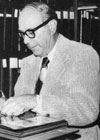 Samuel M. Bluefarb, MD (1912-2007) was named chairman and professor of dermatology in 1962; he earned his MD at the University of Illinois College of Medicine in 1937, then interned at Cook County Hospital 1937-1938, with dermatologic training as a resident at Bellevue Hospital in New York, 1939-1940. He joined the teaching faculty at Northwestern in 1942 as a clinical assistant, rising to professor in 1961. He was also chairman of dermatology at Cook County Hospital.
Samuel M. Bluefarb, MD (1912-2007) was named chairman and professor of dermatology in 1962; he earned his MD at the University of Illinois College of Medicine in 1937, then interned at Cook County Hospital 1937-1938, with dermatologic training as a resident at Bellevue Hospital in New York, 1939-1940. He joined the teaching faculty at Northwestern in 1942 as a clinical assistant, rising to professor in 1961. He was also chairman of dermatology at Cook County Hospital.
Dr. William Caro described Dr. Bluefarb “as a respected chairman and superb dermatologist, but his greatest legacy may have been his medical writings. In addition to numerous journal articles over the years, he authored five significant, highly-referenced books* on cutaneous lymphoreticular diseases.”
After he retired from Northwestern, Dr. Bluefarb moved to Florida and became Professor of Dermatology at the University of South Florida in Tampa and chairman of the Department of Dermatology at the Bay Pines VA Medical Center there. He finally retired from these posts in 1987 and moved back to Chicago. Following the death of his wife Leah Rose in 2004, Dr. Bluefarb joined his son Richard, who lives on the Big Island in Hawaii. He died on June 7th, 2007. He will be remembered fondly by his many former residents and faculty members.

 Henry H. Roenigk, MD was successor to Dr. Bluefarb. The late dean of the medical school, Dr. James E. Eckenhoff stated that “Dr. Roenigk brings an outstanding background of research and clinical excellence to the department … It is an ideal orientation for both service and teaching.” A 1960 graduate of Northwestern’s medical school, Dr. Roenigk was appointed head of the Cleveland Clinic Department of Dermatology in 1968. He was one of the first investigators of a new psoriasis therapy combining ultra-violet light and an oral drug call psoralen that is made from the root of a plant found in Egypt. The experimental technique, which Dr. Roenigk helped to test is not a cure; however it has cleared up manifestations of the disease in 88 percent of the patients treated as reported in Kumakiri, M., Hashimoto, K. Cutaneous nerve stimulation by psoralen-ultraviolet therapy. J Invest Dermatol. April 1978;70(4):163-72.
Henry H. Roenigk, MD was successor to Dr. Bluefarb. The late dean of the medical school, Dr. James E. Eckenhoff stated that “Dr. Roenigk brings an outstanding background of research and clinical excellence to the department … It is an ideal orientation for both service and teaching.” A 1960 graduate of Northwestern’s medical school, Dr. Roenigk was appointed head of the Cleveland Clinic Department of Dermatology in 1968. He was one of the first investigators of a new psoriasis therapy combining ultra-violet light and an oral drug call psoralen that is made from the root of a plant found in Egypt. The experimental technique, which Dr. Roenigk helped to test is not a cure; however it has cleared up manifestations of the disease in 88 percent of the patients treated as reported in Kumakiri, M., Hashimoto, K. Cutaneous nerve stimulation by psoralen-ultraviolet therapy. J Invest Dermatol. April 1978;70(4):163-72.
In 1977, Dr. Roenigk was appointed the first Walter J. Hamlin Professor and Chairman of Dermatology at Northwestern University Medical School. Dr. Roenigk’s tenure as chairman was rich and full with expansion of medical and surgical facilities and faculty members. In 1998 he became Emeritus at Northwestern and moved to Scottsdale, Arizona and where he is in private practice. Dr. Roenigk has written over 350 publications and 8 major textbooks. He has written three of the surgical textbooks with his son Randy, who is chairman of Dermatology at the Mayo Clinic.
 David Woodley, MD was appointed successor to Dr. Roenigk on July 1, 1992. A prolific writer and award-winning investigator, Dr. Woodley was recruited from Stanford University where he was professor and chairman of dermatology. A Missouri native and alumnus of the University of Missouri School of Medicine, he held previous appointments at NIH, University of North Carolina and Cornell Medical Center before his Stanford appointment. Former medical school dean, Harry N. Beaty, credited him with having established a strong research program in immuno-dermatology and praised his “ability to conceptualize and organize creative clinical care and educational programs.”
David Woodley, MD was appointed successor to Dr. Roenigk on July 1, 1992. A prolific writer and award-winning investigator, Dr. Woodley was recruited from Stanford University where he was professor and chairman of dermatology. A Missouri native and alumnus of the University of Missouri School of Medicine, he held previous appointments at NIH, University of North Carolina and Cornell Medical Center before his Stanford appointment. Former medical school dean, Harry N. Beaty, credited him with having established a strong research program in immuno-dermatology and praised his “ability to conceptualize and organize creative clinical care and educational programs.”
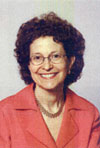 Amy S. Paller, MD, is the new Walter J. Hamlin Professor and chair of the Department of Dermatology. Pursuing graduate training in genetics before medical school, Dr. Paller was determined to specialize in an aspect of pediatrics that would complement her fascination with genetics. She studied with pediatric dermatologist, Alvin Jacobs, MD at Stanford University where she earned her MD in 1978, then returned to her native Midwest—she grew up in Cleveland, Ohio, the daughter of school teachers—for her postgraduate medical education with Nancy B. Esterly, MD, pediatric dermatologist at Children’s Memorial Hospital (CMH).
Amy S. Paller, MD, is the new Walter J. Hamlin Professor and chair of the Department of Dermatology. Pursuing graduate training in genetics before medical school, Dr. Paller was determined to specialize in an aspect of pediatrics that would complement her fascination with genetics. She studied with pediatric dermatologist, Alvin Jacobs, MD at Stanford University where she earned her MD in 1978, then returned to her native Midwest—she grew up in Cleveland, Ohio, the daughter of school teachers—for her postgraduate medical education with Nancy B. Esterly, MD, pediatric dermatologist at Children’s Memorial Hospital (CMH).
After completing her pediatrics residency at Northwestern in 1981, Dr. Paller stayed on for her dermatology residency and a stint as chief resident. Her attraction to the esoteric aspects of pediatrics and dermatology led her to a one-year National Institutes of Health (NIH) dermatology research fellowship at the University of North Carolina, where she studied immunodermatology and conducted research on epidermolysis bullosa, a genetic blistering disease. Returning to the Chicago area and joining the faculty at Rush-Presbyterian-St. Luke's Medical Center in 1984, Dr. Paller rejoined Northwestern in 1988 as associate professor of pediatrics and dermatology and carried on the work of her mentor, Dr. Esterly, as head of the Division of Dermatology at CMH. She has expanded the division from one to four full-time faculty members and developed a pediatric dermatology program that ranks among the best in the world. She was appointed chair of the Department of Dermatology at the Feinberg School in February 2004.
Author of more than 200 journal articles and internationally renowned for research in the growth and mobility of keratinocytes, Dr. Paller also maintains a busy clinical practice and oversees clinical trials at CMH. Being a Northwestern ‘insider’ and an investigator by nature has been beneficial for her appointment. She stated: "I was fortunate to know the department well before accepting the position, which allowed me to target areas of need and pinpoint priorities. We are already making good progress in recruiting new faculty members and building a strong interdepartmental research program."
From small beginnings, the Department of Dermatology at Northwestern University has grown into a world class medical educational unit with an outstanding three-year residency training program and further opportunity for a four-year research track that combines residency and fellowship training. Residents gain clinical experience at the institutions affiliated with the McGaw Medical Center which provides a rich academic environment in which dermatology faculty and residents actively participate.
Primary missions include: providing patients with state-of-the-art, compassionate care for disorders of the skin, hair, nails and mucous membranes, and its relationship to systemic disorders; maintaining excellence in education for residents, fellows and graduate students, allied health personnel, and other members of the dermatological community; fostering research, both in the laboratory and in the clinic setting that ultimately will improve clinical care; and advocating the interest of patients for clinical care, education, and research.
The Department is recognized internationally for expertise in keratinocyte biology with more than 30 researchers from seven departments conducting research in this field. Other departmental research focuses on cutaneous inflammation and immunology, the biology of carcinomas and melanomas, and epithelial stem cells.
*Full citations and library locations for Dr. Bluefarb's books:
Kaposi’s Sarcoma, Springfield, Ill., Thomas, 1957. [Galter Library: Mezzanine 616.5 B625 1957],
Cutaneous Manifestations of the Malignant Lymphomas, Springfield, Ill., C.C. Thomas, c1959. [Galter Library: Mezzanine WH 525 B658c 1959]
Cutaneous Manifestations of the Benign Inflammatory Reticuloses, Springfield, Ill., C.C. Thomas, c1960. [Galter Library: Mezzanine WH 650 B658cb 1960],
Leukemia Cutis, Springfield, Ill., Thomas, c1960 [Galter Library: Mezzanine WR 143 B658L 1960],
Cutaneous manifestations of the reticuloendothelial granulomas, Springfield, Ill., C.C. Thomas, c1960. [Galter Library: Mezzanine WH 650 B658c 1960]
NOTE: Some locations of the books have changed since this article was written. Check the library's online catalog for current location and availability.
Updated: December 18, 2023